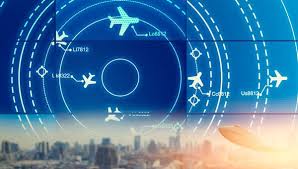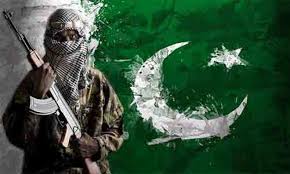Inputs to the questions posed by the Journalist.
Q1. How’s the current Pahalgam crisis beneficial for the CCP’s South Asian agendas?
The Pahalgam crisis indirectly serves the Chinese Communist Party’s (CCP) strategic agendas in South Asia.
Weakening India’s Regional Influence. India, entangled in Kashmir-related conflicts, limits its ability to project power in South Asia, aligning with Beijing’s goal of maintaining regional dominance.
Strengthening the China-Pakistan Alliance. China’s “all-weather” partnership with Pakistan is a cornerstone of its South Asia strategy, particularly through the China-Pakistan Economic Corridor (CPEC). The crisis reinforces Pakistan’s reliance on China, as Islamabad faces diplomatic and economic isolation from India’s retaliatory measures, like trade restrictions and treaty suspensions. China’s public support for Pakistan (evident in Foreign Minister Wang Yi’s call for a “swift and fair investigation” into the attack and backing Pakistan’s sovereignty) bolsters this alliance.
Exploiting Regional Instability. The CCP benefits from controlled instability in South Asia, as it keeps India and Pakistan preoccupied with bilateral tensions rather than challenging China’s regional projects, like the Belt and Road Initiative (BRI). The Pahalgam crisis, by escalating border skirmishes and diplomatic hostilities, creates a volatile environment that diverts attention from China’s activities in Nepal, Bangladesh, and the Indian Ocean.
Undermining India’s Economic Narrative. The Pahalgam attack has challenged India’s narrative of stability and economic growth, particularly in Kashmir post-Article 370 revocation. This undermines India’s appeal to foreign investors, a key CCP concern given India’s role as a rival in attracting manufacturing post-U.S. tariffs on China.
Limiting U.S.-India Strategic Convergence. The crisis occurs amid U.S. distractions, with President Trump’s focus on trade wars and tariffs. By keeping India embroiled in a regional conflict, the CCP reduces the likelihood of deeper U.S.-India strategic alignment, which could counter China’s influence.
Q2. What’s behind China’s support for Pakistan on the Kashmir issue? Why is China supporting Pakistan’s call for an impartial probe into the April 22 attack?
China’s support for Pakistan on the Kashmir issue stems from a mix of strategic, geopolitical, and domestic considerations that align with Beijing’s long-term regional agenda.
China’s support for Pakistan on Kashmir is not just about friendship—it’s about undermining India strategically, protecting infrastructure interests, controlling regional narratives, and securing ideological consistency on separatism and counterterrorism.
The call for an “impartial probe” is part of a larger strategy of positioning China as “neutral” while subtly backing Pakistan to complicate India’s diplomatic standing.
Strategic Alliance with Pakistan (Counterbalance to India). China and Pakistan have a decades-long strategic alliance. Beijing views Islamabad as a critical counterweight to India in South Asia.
Protection of CPEC Interests. CPEC passes through Gilgit-Baltistan, a region India claims as part of Jammu & Kashmir. India opposes this on sovereignty grounds. By backing Pakistan on Kashmir, China strengthens the legitimacy of its infrastructure investments in disputed territories. Also, any instability in Kashmir has a direct impact on the security of Chinese nationals and assets working in Pakistan-administered regions.
Diplomatic Leverage and Global Narrative Control. By supporting an “impartial probe” into the April 22 attack (in which Indian civilians were killed), China is deflecting attention from Pakistan-based terror groups, buying Islamabad diplomatic time.
Q3. A hidden Huawei satellite phone has surfaced in the probe into the Pehalgam attack. What does it indicate? What’s the history of Chinese equipment in the Kashmir terrorism ecosystem?
The detection of a Huawei satellite phone near the attack site in Pahalgam’s Baisaran Valley indicates the terrorists’ use of advanced communication tactics. The phone connects to China’s satellite network, enabling secure, off-grid communication without reliance on local cellular networks. This capability allows operatives to evade Indian surveillance systems, which heavily monitor terrestrial networks.
Intelligence sources reportedly indicate the phone was active during the attack, suggesting its use for real-time coordination among attackers or with handlers across borders, possibly in Pakistan.
Encrypted Chinese messaging apps alongside the phone further point to a deliberate strategy to avoid detection, as these apps were banned in India post-2020 Galwan clash due to security concerns.
Huawei products are banned in India due to national security risks, meaning the phone was likely smuggled, possibly from Pakistan.
The phone’s connection to Tiantong-1, a Chinese state-controlled network, raises questions about whether Chinese technology is being repurposed for terrorist activities, either deliberately or through illicit markets.
Chinese equipment has periodically surfaced in J&K’s terrorism landscape, reflecting both the global proliferation of Chinese technology and targeted use by militant networks.
Q4. What’s China’s agenda (not policy) today on Kashmir? With Turkey and China supporting Pakistan in the current crisis, how do you gauge the emerging geopolitical situation?
China’s current agenda on Kashmir—distinct from its official policy—is geopolitically opportunistic, destabilising in intent, and part of a broader strategy to constrain India’s rise.
It operates below the threshold of overt conflict but consistently supports Pakistan diplomatically, technologically, and in multilateral forums.
The support by both China and Turkey to Pakistan during the ongoing Pahalgam crisis indicates the emergence of a soft anti-India bloc seeking to leverage Kashmir as a pressure point.
While China’s official policy is neutrality and calls for bilateral resolution, its agenda is about instrumentalising Kashmir to box in India strategically and diplomatically.
Turkey has emerged as a loud voice on Kashmir, echoing Pakistan’s positions at the UN and OIC. Turkey’s support complements China’s involvement. This triad works to internationalise Kashmir, delegitimise Indian control, and challenge India’s secular-democratic image.
Q5. Was the attack timed with the development of the India-US trade deal? It diverted the whole world’s attention from Trump’s trade tariff war to Kashmir! Was it to thwart the US trade war with China?
April 22, 2025’s timing has sparked speculation about its alignment with geopolitical developments, particularly the India-US trade deal negotiations and the escalating US-China trade war under President Donald Trump’s tariff policies.
The timing of the attack, during Vance’s visit and amid trade negotiations, suggests a possible intent to maximise disruption.
The choice of Pahalgam, a tourist destination, ensured global media coverage, potentially overshadowing trade discussions.
The attack dominated Indian and international headlines and undeniably shifted global media and diplomatic focus to Kashmir, at least temporarily. It did not “eclipse” the trade war but added a parallel crisis, particularly in South Asia, where India-Pakistan tensions dominated regional discourse.
The attack significantly diverted attention to Kashmir, particularly in India and among its partners, but it did not entirely overshadow the US-China trade war globally.
The attack aligns with China’s interest in disrupting India’s US trade alignment, but lacks evidence of direct Chinese intent. It likely served Pakistan’s goals while indirectly benefiting China’s agenda.
Q6. Other relevant aspects?
Pakistan’s military and government are grappling with economic woes and political unrest, exacerbated by India’s trade restrictions and diplomatic isolation. Supporting militant proxies may be a way to deflect domestic criticism. However, this is a foolish mistake, and domestic pressures could push both nations toward miscalculation.
The crisis’s economic fallout extends beyond India and Pakistan, affecting volatile global markets. India’s trade restrictions and border closures further damage Pakistan’s already strained economy, increasing its reliance on China’s financial support.
The India-Pakistan-China nuclear dynamic raises the stakes. While restraint is being held, the crisis tests this balance.
Link to the article by Venus Upadhayaya on The Epoch Times (Quoted four times):-
https://www.theepochtimes.com/world/chinas-footprint-is-clear-in-kashmir-crisis-analysts-say-5852309
Please Add Value to the write-up with your views on the subject.
For regular updates, please register your email here:-
References and credits
To all the online sites and channels.
Pics Courtesy: Internet
Disclaimer:
Information and data included in the blog are for educational & non-commercial purposes only and have been carefully adapted, excerpted, or edited from reliable and accurate sources. All copyrighted material belongs to respective owners and is provided only for wider dissemination.



